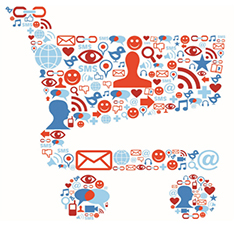Five Factors Driving Marketplace Complexity in The Future of Marketing
By Christopher Brace | October 09, 2017
Today, corporate structures and processes focus on dealing with uncertainty when in reality, it’s ambiguity about which we need to be concerned.
The Greek philosopher Heraclitus said, “The only thing that is constant is change,” and nowhere does this seem truer than in the world of goods and services marketing. Change seems to happen more frequently and with more severe consequences than ever before. A 2011 IBM global study of CMOs identified increasing complexity and turbulence as their number one concern for the future (results confirmed in the 2014 study). This begs the question, what’s making marketing so much more complex? The two biggest factors are uncertainty and ambiguity, but it’s the latter that is having the most significant impact. Uncertainty is when you know the variables in the game but you don’t know their values. Ambiguity is when you don’t even know the variables. Today, corporate structures and processes focus on dealing with uncertainty when in reality, it’s ambiguity about which we need to be concerned. There is a disconnect between the types of problems companies need to solve and the ones they are structured to solve. When we don’t know what we don’t know – faced with ambiguity – our gears come to a grinding halt.
There are five main factors being discussed today that will drive marketplace complexity over the next ten years. We will cover the first two factors, big data and digital/social media in this issue, and address the remaining three in March.
1. Big data
2. Digital/Social media
3. Omni-channel shopping Five
4. Declining brand loyalty
5. ROI measurement
 Big Data
Big Data
The immense power of today’s computers is facilitating the analysis of massive amounts of data collected through digital and social media. This analysis of big data is often heralded as the panacea for all marketing problems. How many times have you heard this in the halls of your company, “If we only had more data we would know exactly what to do!” The fact is, companies don’t know what to do with the data they already have. They frantically try to run the perfect set of analyses that will give them all the right answers. The problem with panaceas is they rarely prove to be the solutions they are promised to be, and big data is no different.
There are two major caveats to keep in mind when it comes to big data. First, the analysis is often done in isolation of the company’s key strategic growth initiatives, so too often, hard to activate immediately. Secondly, big data is heavily behavioral in nature, and consumers and shoppers’ behaviors change all the time. By the time a company analyzes the data and draws conclusions from it, the behaviors on which it is based may have already changed. This is not to say that big data is not relevant, because it is extremely relevant. But we need to link it directly to the company’s key strategic growth initiatives so it creates as well as captures value for the brands. We also need to realize and accept its limitations.
Digital/Social Media
Digital and social media is something else that’s being sold as a cure-all. We can connect with our consumers and shoppers at almost any point in their day due to their use of technology. This has led marketers to believe that if we push the right offer (often identified through analysis of big data) – no matter when that offer is
Column pushed - then we’re successfully using digital and social media. The problem is, just because we can push an offer in front of the consumer and shopper doesn’t mean we should. One of the biggest challenges we as marketers face is: are we connecting with our consumers and shoppers at the right place and time, with a message that contains the right amount of emotional resonance?
 The companies and brands that are doing this well are the ones who understand the strategic role digital and social media can play in the telling and deepening of the brand story. By no means should we ignore valueadded offers because those are very valuable. But we need to understand that monetary incentives are not the only way to convert consumers into shoppers. There are two ways to persuade shoppers to purchase your brands: you can manipulate them or inspire them. Today, we spend most of our efforts manipulating via price promotion. We need to start inspiring them with stories that strike the right emotional resonance. There is a physics principle that is very applicable to this topic: as resonance increases, resistance decreases. The more emotionally resonant our messaging, the more successfully we overcome consumers and shoppers’
The companies and brands that are doing this well are the ones who understand the strategic role digital and social media can play in the telling and deepening of the brand story. By no means should we ignore valueadded offers because those are very valuable. But we need to understand that monetary incentives are not the only way to convert consumers into shoppers. There are two ways to persuade shoppers to purchase your brands: you can manipulate them or inspire them. Today, we spend most of our efforts manipulating via price promotion. We need to start inspiring them with stories that strike the right emotional resonance. There is a physics principle that is very applicable to this topic: as resonance increases, resistance decreases. The more emotionally resonant our messaging, the more successfully we overcome consumers and shoppers’


_165_265.jpg)
_165_265.jpg)





Comments